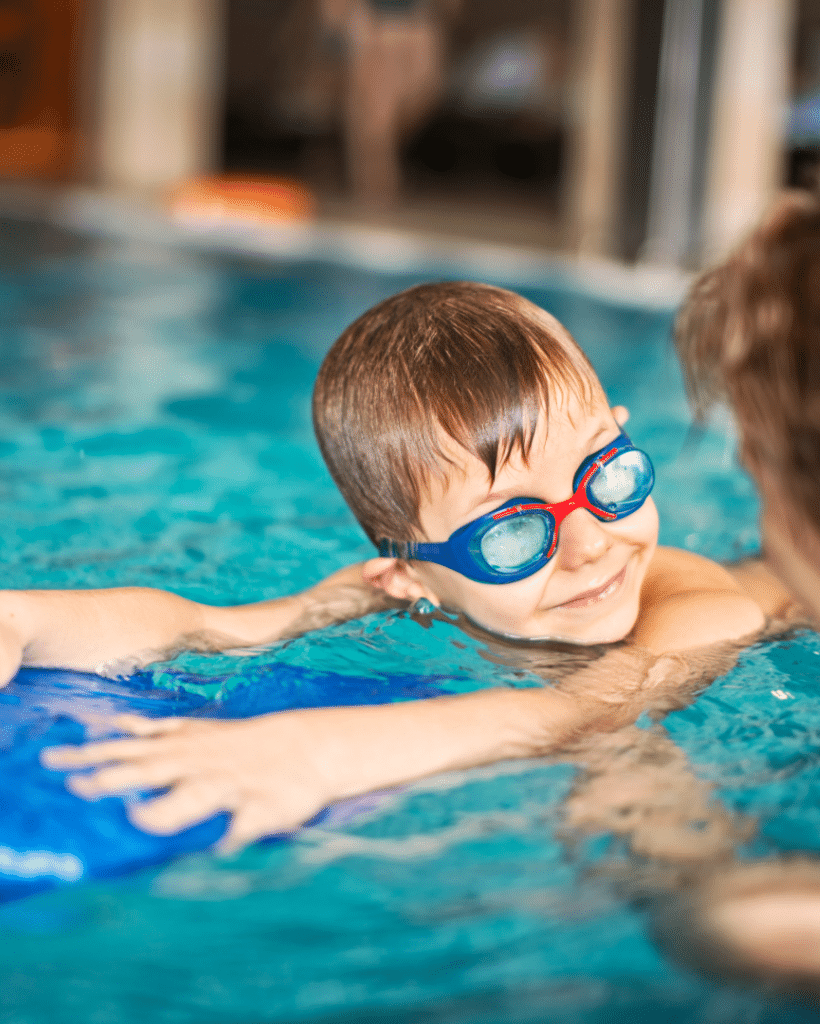
Drowning is one of the leading causes of accidental death among children, particularly between the ages of 1 and 4. Fortunately, formal swimming lessons are one of the most effective ways to reduce this risk. But when is the best time to begin?
According to the American Academy of Pediatrics (AAP), most children can start learning water safety skills and building confidence in the water as early as age 1. At Blue Dolphin Swim School, our mission is to equip children with lifelong swim skills in a safe, supportive environment while empowering parents with vital water safety tips.
The Right Age to Start: A Breakdown
Ages 1-4: Building the Foundation
Children as young as 12 months may benefit from structured water safety programs-especially those who spend time near home pools, backyard pools, or natural water hazards. At this age, swim lessons focus on:
-
Comfort in the water
-
Gentle submersion
-
Floating and breath control
-
Safe exits from the pool
These early lessons lay the groundwork for future swimming competency and instill a healthy respect for water.
Ages 4-5 and Up: Learning Core Skills
By age 4-5, most kids are physically and emotionally ready to learn:
-
Independent floating and treading
-
Basic rescue techniques
-
Moving confidently through water
-
Understanding rip current risks in open water
This age group benefits most from learning swim skills such as front crawl, backstroke, and safety techniques they can use in an emergency.
Infants Under 1: Is It Too Early?
While babies under 1 can’t yet lift their heads to breathe or retain swim instructions, parent-child classes can help them acclimate to water and become comfortable with being held and moved through water. These sessions are less about swimming and more about bonding and sensory exploration.
Water Safety: It Goes Beyond the Pool
Swim lessons are just one part of a broader water safety program. Children should also be taught:
-
The importance of PFDs (personal flotation devices) like life vests-especially on boats or near open water
-
How to identify and avoid rip currents
-
The concept of the water watcher-an undistracted adult whose job is to supervise swimming children
-
Proper behavior in and around water, including boating safety and not swimming alone
These lessons apply not only at public pools, but in watercraft, during water activity outings, and even at home where toddlers may encounter hazards like toilets, bathtubs, or improperly fenced pools.
Key Safety Tips for Parents and Caregivers
Here are essential safety tips to keep in mind as your child begins their swim journey:
-
Always supervise children in and near water-never rely solely on floatation devices or siblings.
-
Designate a water watcher during parties or group swims.
-
Keep drinking water separate from recreational water to avoid confusion and contamination.
-
Learn CPR and rescue techniques as a parent or caregiver-it could save a life.
-
Ensure your child wears a Coast Guard-approved PFD during boating or open water activities.
-
Teach children about boat safety and the dangers of playing near boats, drains, and pool edges.
-
Check that your swim school follows national safety guidelines and offers appropriate membership details.
Choosing the Right Swim Program
Not all swim schools are created equal. Here’s what to look for in a quality program:
-
Certified instructors with training in lifesaving and first aid
-
A structured curriculum that teaches both swim skills and water safety
-
Clean, well-maintained facilities that meet federal and government organization regulations
-
Low student-to-teacher ratios for personalized instruction
-
Parent-friendly policies that encourage involvement and observation
Programs like those at Blue Dolphin Swim School also prepare students to respond to real-life water scenarios, including boating incidents, unexpected immersion, and coping with cold water or barotrauma in deeper water.
Frequently Asked Questions
1. Is age 1 too young for swimming lessons?
Not necessarily. Children can start learning water safety skills and basic comfort in the water around age 1. Parent-child classes are ideal at this stage.
2. What skills should my child learn first?
Floating, breath control, and safe pool exits are the first core competencies. These foundational swim skills help prevent panic and build confidence.
3. Should my child wear a life vest during lessons?
In a controlled swim class setting, flotation devices may not be used. However, children should always wear life vests in open water or on a boat.
4. What is a “water watcher”?
A water watcher is a designated adult responsible for actively supervising swimmers without distraction. Rotating this responsibility improves safety in group settings.
5. How can I prepare my child for lessons?
Talk about what to expect, visit the pool ahead of time, and practice simple skills like blowing bubbles or kicking in the tub to build confidence.
Start Smart. Swim Safe.
Whether your child is just starting to crawl or is ready to master the front crawl, Blue Dolphin Swim School provides a safe, structured, and engaging environment tailored to their developmental stage. Our water safety programs, experienced instructors, and parent-supported classes make us a trusted choice for families who value safety, fun, and lifelong skills.
Visit www.bluedolphinswimschool.com today to explore class options, view membership details, or enroll in your first session. Let’s make water safety second nature-one swimmer at a time.

